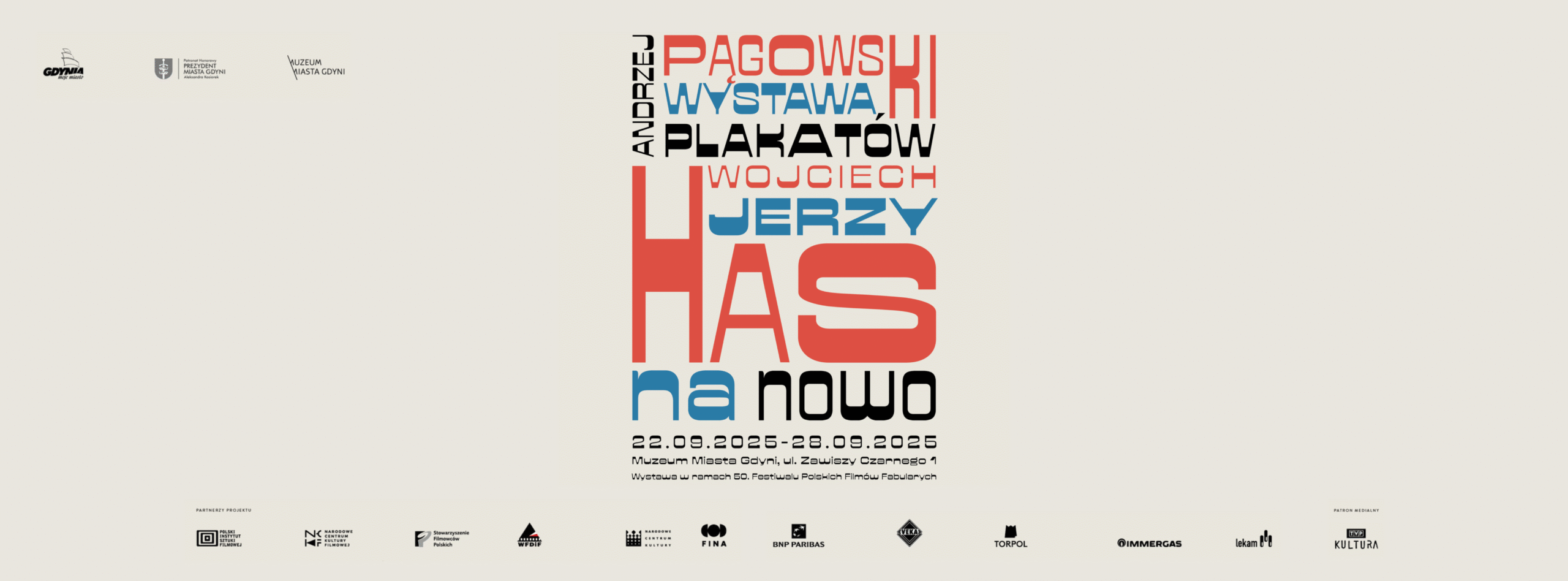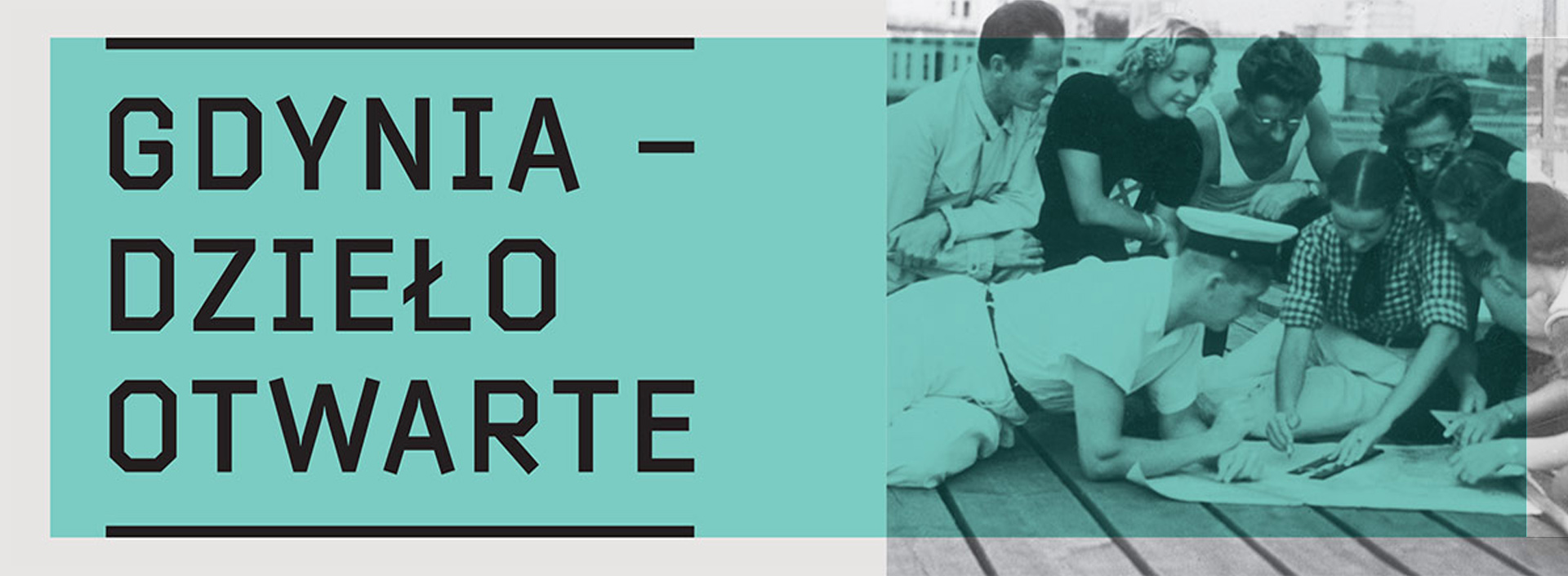History
The new seat of the Gdynia City Museum is a modern bright sandstone building located where the sea and land meet. It was opened by the President of Poland Lech Kaczyński during a ceremony that took place on 16th November 2007. This event ended Gdynia’s long struggle for a suitable place to present its past or a place where generations could exchanges thoughts, experiences and dreams. The idea of setting up a municipal museum in Gdynia was born among the local elite in the 60s of the 20th century. Its activity and determination resulted in the City Public Library setting up the City History Documentation Department which was located in the historic house from the early 20th century in 30 Starowiejska Street, in which a Kashubian activist and a Polish patriot Antoni Abraham lived for several years.
For 14 years, researchers and enthusiasts of the project gathered exhibits: photographs, postcards, documents on social life, posters, plans, maps and works of art, which became the basis of the collection for the Gdynia City Museum which the Mayor founded on 1st January 1983. Its management’s office was located in Starowiejska Street, in the so-called Abraham’s house.
The warehouse and exhibition facilities were located in the former Gdynia’s artists’ exhibition pavilion in 21 Waszyngtona Street, where the Gemini Recreation Center is today. The time when the Museum waited for its new building was spent organizing exhibitions and events, extending the collections and, above all, building lasting, strong relations with the local community. Tens of thousands of objects gathered in the Museum are a source of knowledge about the past and today’s life of the city, which constantly fascinates tourists and makes new generations of its inhabitants proud.
Mission
Gdynia
Gdynia is a unique city in Polish history. It is Poland’s dream of access to the sea come true as well as the most spectacular outcome of Poles’ 20th century modernization efforts. Therefore, it is a city in which modernity and everyday life are intertwined with myths – the myth of the sea, the myth of modernity, the myth of entrepreneurship, the myth of Polishness, the myth of the interwar, the myth of the city. We want to explore the ordinary, everyday history and modernity of the city as well as its mythology, or, more precisely, its various mythologies.
Modernity
Gdynia is modernity’ – modern politics, economics and architecture or modern transport. As a part of its activity, the Museum explores and presents modernity in its diversity – its good and bad aspects or the relevant and obsolete ones as well as the spectacular and the ordinary, which may be barely noticeable.
Designing
Gdynia is a modernist city. Modernism and design are closely intertwined. The modern world is largely a designed world. We are surrounded by completed design projects: buildings, vehicles, objects, prints. Gdynia presents design as an important element of our lives. We want to present the important, interesting, typical, unique famous of forgotten phenomena in Polish and international design.
Education
Just like every city, Gdynia not only lives with present, but also designs the future of the urban community. We understand the importance of education for building a good future and we know that culture has the power to bond communities, so cultural education is one of the most important goals for us. Through education based on modern ideas, we want to not only explain phenomena around us, but also to provide tools for independent interpretation of the world and culture.
Projects
Baltic mini textile Gdynia
Baltic Mini Textile Gdynia (formerly International Baltic Triennial of Miniature Textile in Gdynia) is the youngest of the four major weaver miniature reviews in Europe. However, it has already developed its own position and meaning. Thus, it can be compared to other prestigious international competitions organized in Szombathely (Hungary), Angers (France) and Como (Italy).
Conservation of musealia for the centenary of the city of Gdynia
The project envisages the conservation of 12 objects from the collection of the Gdynia City Museum in preparation for the celebration of Gdynia’s centennial anniversary. Selected musealia related to the city’s pre-war and post-war history, become a gateway to spinning tales about its pioneering history and symbolic dimension in the propaganda of the twentieth century, as well as the turbulent post-war times – memories of workers’ conflicts with the people’s government or foreign goods.
Modernism Talking
The project “MODERNIZM TALKING. Youth for Youth about Modernism Architecture” was developed to raise awareness about the heritage of modernism architecture, its beauty, universal assumptions and enduring value. The project is implemented by the Good Culture Foundation, Gdynia City Museum is a partner in the project.
Gdynia is broadcasting!
We recently inaugurated a series of events in the city space and on the Internet, through which you will be able to discover interesting, surprising and inspiring threads from the history of the city of Gdynia. Explore the city as you like: while walking, listening to podcasts, exploring on your own or in the company of people close to you. Send your own signal towards urban spaces and set off on a journey with us!
Kazimierz „Kachu” Ostrowski
The mission of the Gdynia City Museum is to set new directions, to present, discuss and talk about important people, events and phenomena. A museum is its people – this slogan has guided us for a long time, and with our activities we prove that these are not empty words. One of them is the project FOR FRIENDS: KACHU, which aims to introduce our audiences to the silhouette of an outstanding Gdynia artist, Kazimierz Kach Ostrowski (1917-1999), painter, student of professors of painting: Janusz Strzałecki, Artur Nacht-Samborski and Jacek Żuławski at the State Higher School of Fine Arts in Sopot and a student at the Paris atelier of avant-garde masters Ferdinand and Nadia Léger, creator of monumental architectural compositions made in sgraffito technique, designer of tapestries, carpets and stained glass.
The Monograph of Gdynia
The Monograph of Gdynia, is a new series of publications by the Gdynia City Museum and the University of Gdansk Publishing House, initiated by our Museum in connection with the need to comprehensively cover Gdynia’s past in book form.
Awards
29.10.2024
Gdynia City Museum awarded 3 trophies in the “Visible Museum” 2024!
3 nominations and 3 trophies in the 6th Review of the Visible Museum 2024 National Institute of Museums! We are very pleased with the success of the exhibitions “It Never Rains in Gdynia”, “Jakub Szczęsny. PPPP“ (2nd place and honorable mention in the category: Visual identification of the exhibition” and the project “For friends: ‘Kachu’ (honorable mention in the category: promotional and marketing campaign).
22.05.2017
Exhibition “Glass, metal, detail. Gdynia’s architecture in detail” THE HISTORICAL EVENT OF 2016
We are very pleased to inform you that the exhibition of the Gdynia City Museum, „Glass, metal, detail. The architecture of Gdynia in detail” won the nationwide competition for the Historical Event of the Year organized by the Museum of Polish History. (Photo: Museum of Polish History)

Address
Gdynia City Museum
st. Zawiszy Czarnego 1A
81-374 Gdynia
Opening hours
Tuesday, Thursday, Friday: 10 – 18
Wednesday: 12 – 20
Saturday, Sunday: 10 – 17
Tickets
reduced: PLN 12 (per person)
normal: PLN 20 (per person)
family: PLN 45 (maximum two adults and 8 children under 18)
free entry every Tuesday




